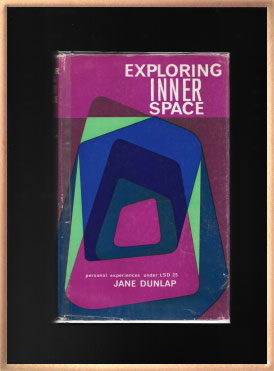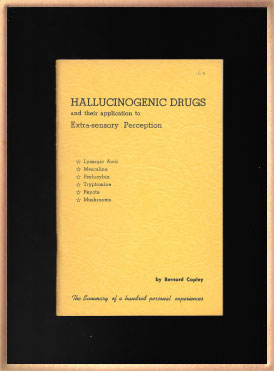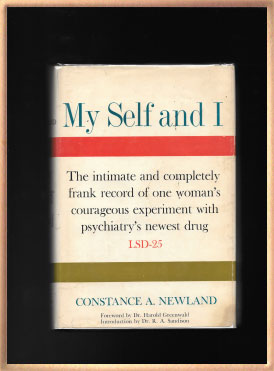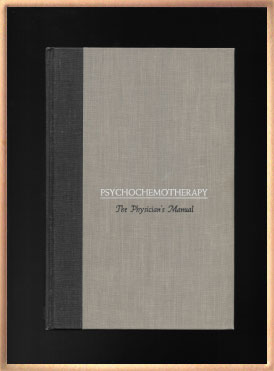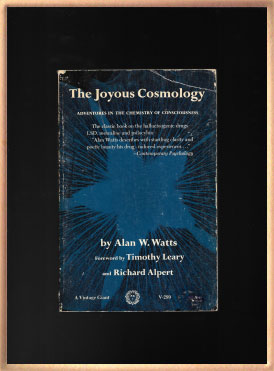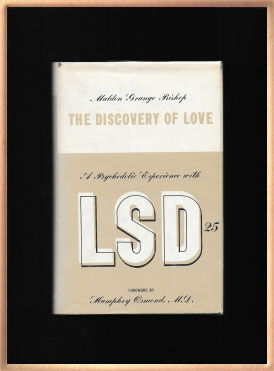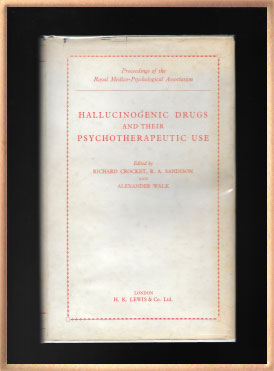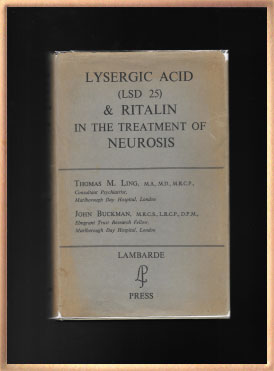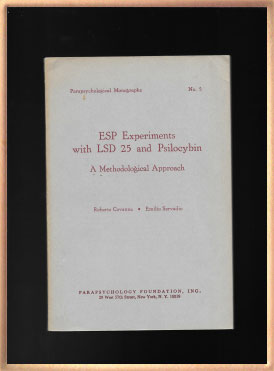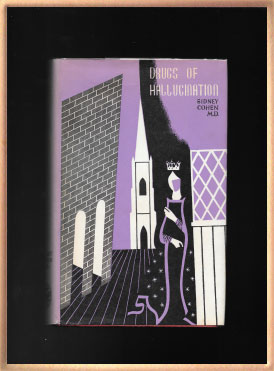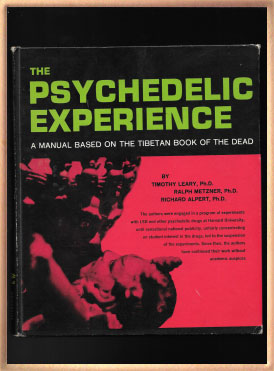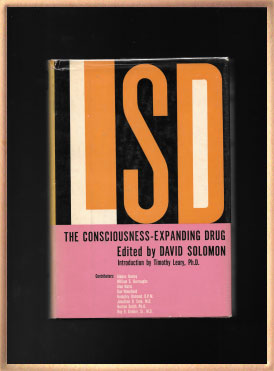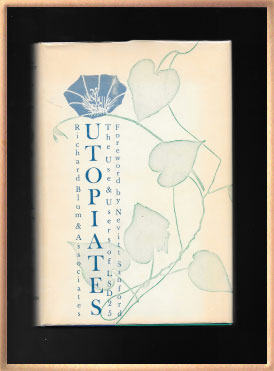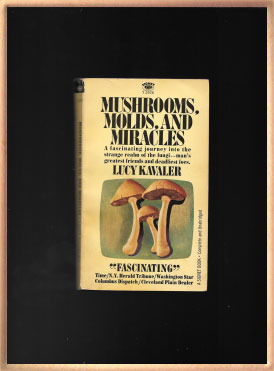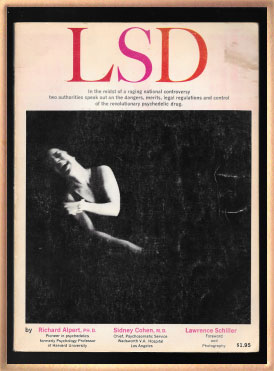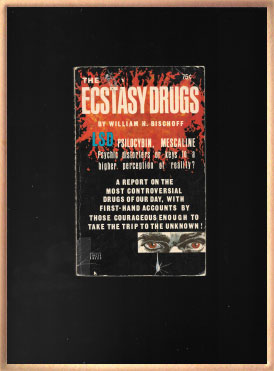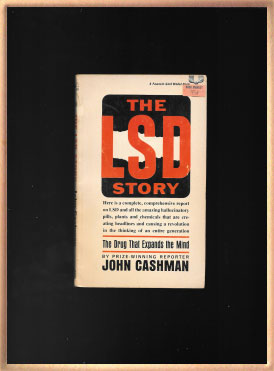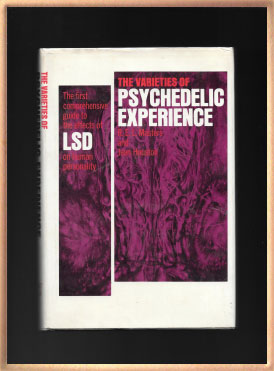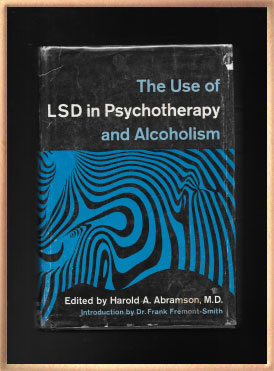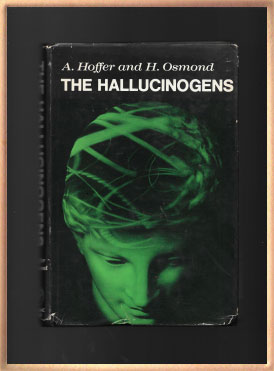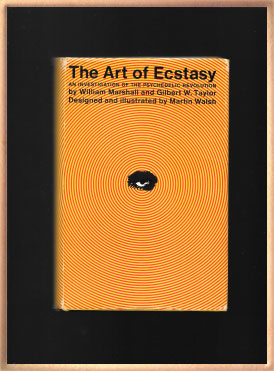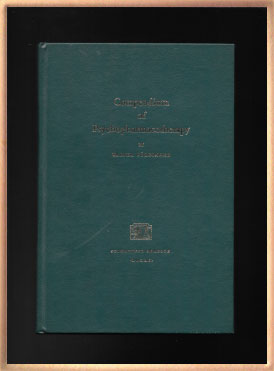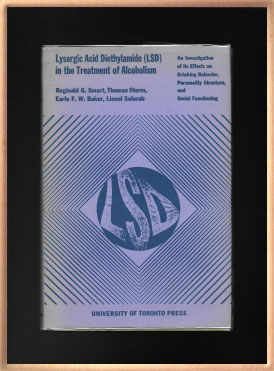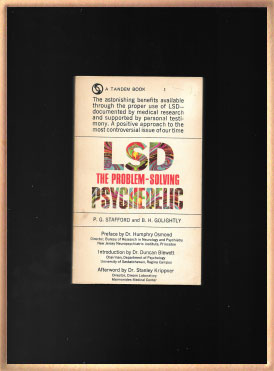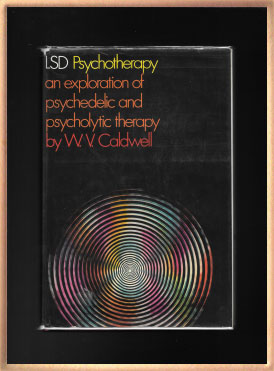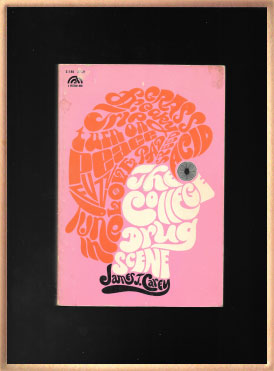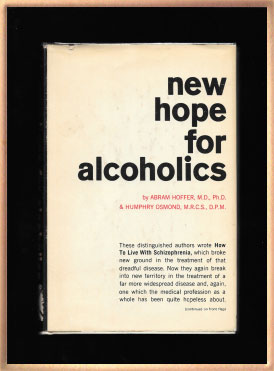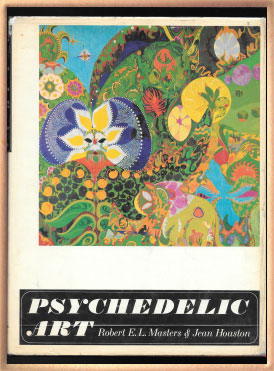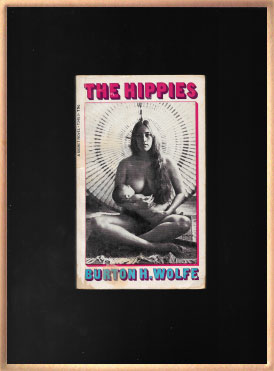
☙ Psychedelia ❧
Bibliothēca Studiorum Psychedelicorum
Books from 1960–1969
See also
The Macy Conferences (1954–1959)
(the last volumes published in 1960)
✾
1961
Exploring Inner Space: Personal Experiences Under LSD-25
(London: Scientific Book Club)
Written pseudonymously by famed nutrionist Adelle Davis, this is a wonderful, eloquent account of her experiences undergoing psycholytic therapy.
✾
1962
Hallucinogenic Drugs and their Application to Extra-Sensory Perception
(Joshua Tree, CA: Hypnosophic Institute)
There is rather a sad follow-up to the story behind this book. Apparently, according to one online description about this book (and its author), “Copley was one of the earliest psychedelic drug martyrs, dying in a Missouri prison after receiving a long sentence for LSD distribution even before the drug became illegal.“
How sad, for the author of this to have died in prison! Don’t exactly know the whole story behind that, though.
✾
1962
Myself and I
(New York: Coward-McCann)
Another wonderful account of a woman’s experiences undergoing psycholytic therapy, with beautiful descriptions of the subconscious meaning she discovered in them (and within herself).
✾
1962
Psychochemotherapy: The Physician’s Manual
(Los Angeles: Western Medical)
Not of any great significance to the use of LSD in psychotherapy, while this book does discuss the pharmacological aspects of many different psychiatric drugs, it’s relevance (to me) is that it was written by some of the major psychiatrists who were working in the field of LSD psychotherapy at the time (Cohen and Ditman, in particular), and here, with this book, we are given a good overview of the sorts of psychiatric medications that were being used alongside LSD (etc.) at that time. In other words, it puts the field of “LSD psychotherapy” within the wider, more general context of “psychopharmacology.“
✾
1962
The Joyous Cosmology
(New York: Vintage)
First edition (softcover) of this popular and influential book on psychedelics, by the influential writer, Alan Watts — for those familiar with him, he needs no introduction, of course. Wonderful, thought-provoking writing, a good companion to Huxley’s earlier works.
✾
1963
The Discovery of Love: A Psychedelic Experience with LSD-25
(New York: Torquil)
Here we have yet another account of psycholytic therapy, which in this case had the effect of bringing the author to the realization of “the greatest force in the universe” — love.
✾
1963
Hallucinogenic Drugs & their Psychotherapeutic Use
(London: H.K. Lewis)
To the best of my knowledge, this was the first book-length work on how psychedelics were being used in psychotherapy over in Great Britain. Interesting to see how perspectives were developing (in comparison to the earlier psychiatric texts) as peoples’ understanding grew, along with the various specific methods/areas that were being looked at (such as group therapy, work with the incarcerated, juvenile delinquency, etc.). It seems they were still “feeling their way around” at this stage, and while other researchers were starting to get a clearer picture of how psychedelics might be most effectively used, there was still a great deal that was unknown and untried (not always with the best results, as one might imagine!).
✾
1963
Lysergic Acid (LSD) & Ritalin in the Treatment of Neurosis
(London: Lambard)
This is one of the best early works to come out on LSD psychotherapy, providing a good overview of how LSD-assisted sessions should be conducted, along with the various concerns, etc., but perhaps most interesting are the chapter-length case studies concerning a number of patients, each struggling with different afflictions, and how they were helped with this therapy.
✾
1964
ESP Experiments with LSD 25 & Psilocybin: A Methodological Approach
(New York: Parapsychology Foundation)
As weird a book as it sounds — with some pretty weird, quite surrealistic photos, to boot (which were used as “targets” for the ESP experiments). The text itself is rather dry and boring — and the results of the experiment inconclusive (not surprisingly).
✾
1964
Drugs of Hallucination
(London: Scientific Book Club)
Coming out at a time when first Hollywood was all a-buzz with the remarkable success of LSD psychotherapy, followed by the early studies at Harvard by Timothy Leary (et al.) and the widespread notoriety that they were beginning to get in the press, this book — by one of the most important psychotherapists working with LSD over the previous decade — sought to take a sober and well-informed look at the whole phenomenon.
✾
1964
The Psychedelic Experience: A Manual Based on the Tibetan Book of the Dead
(New York: University Books)
Hardcover first edition of this “major” work by Timothy Leary and his colleagues, Richard Alpert (later known as Ram Dass) and Ralph Metzner. This book was meant to be a “guide” for lay people doing psychedelic sessions on their own, although I personally would find it somewhat difficult to be “guided” during such a session in the way that this book outlines. I wouldn’t say that it’s of no significance, however, and in many respects its approach does fit in quite well with understandings of consciousness (and psychological processes) that have developed in subsequent years (with a respect for many understandings that come from various ancient traditions, including perspectives such as the Tibetan Book of the Dead, the Egyptian book of the same, as well as Mayan codices and beliefs, etc.). Nevertheless, perhaps this book’s greatest relevance is for its cultural significance at that particular time, back in the mid-1960s, more than for anything related to actual therapy or “guidance.“
Your mileage may vary, of course — there are many Learyites out there who I’m sure would beg to differ from my somewhat ambivalent (if not somewhat amused) opinion of this book.
✾
1964
LSD: The Consciousness-Expanding Drug
(New York: G.P. Putnam’s Sons)
Great book from that period on the sociological and cultural significance of LSD, along with various articles of significance to its use in psychotherapy, by many important authors of that day.
✾
1965
Utopiates: The Use & Users of LSD-25
(New York: Atherton)
Another great book on the sociological and cultural importance of psychedelics (with a little more emphasis on those aspects than on psychotherapy).
✾
1965
Mushrooms, Molds, & Miracles
(New York: Signet)
A look at ’shrooms (in general — not just the “magic” ones) from the perspective of a mycologist.
✾
1966
LSD
(New York: New American Library)
his is an absolutely awesome “picture book,” so thoroughly definitive a photographic expose of what acid and the “psychedelic scene” was all about back in ’66 (the year it became illegal), full of photos of various young people tripping out (for good or bad), with a succinct explanation of what its all about, what’s “happening” with the kids (and adults) these days, written by three highly respected and acclaimed contributors.
✾
1966
The Ecstasy Drugs
(Delray Beach, FL: University Circle Books)
Trash — ha ha.
✾
1966
The LSD Story
(Greenwich, CT: Fawcett)
More stuff for “public consumption,” nothing overly scholarly — a book you might have found at the checkout counter back in the day.
✾
1966
The Varieties of Psychedelic Experience
(New York: Holt, Rinehart & Winston)
This is the book that Leary (et al.) had endeavoured to write a couple years earlier with their book, The Psychedelic Experience! Masters & Houston’s work here is everything that the former book tried to be — a true-blue, usable manual on the psychedelic experience, what it’s like, what one can expect, along with guidelines for running an effective psychedelic session. For lay people, this is still far and away one of the very best books around on the subject, it’s very well-written, easily accessible for both professionals and lay people alike, and extremely informative. For anyone interested in “the psychedelic experience,” and especially if one is also interested in the social/cultural history of the 1960s, I can’t recommend this one enough!
✾
1967
The Use of LSD in Psychotherapy & Alcoholism
(New York: Bobbs-Merrill)
This was a VERY important work. When LSD was made illegal in 1966, effectively putting a total moratorium on all the great strides that had been being made with it in the field of psychotherapy for over a decade, panic ensued within the therapeutic community, and thus a national conference was put together by Harold Abramson (who had organized those other conferences conducted by the Macy Foundation back in the ’50s) in an effort to gather up as much evidence as possible that had been conducted so far, and to hopefully quell the public hysteria surrounding LSD. A very, very significant and major work, indeed, full of extremely important articles written by the most important therapists and researchers of that time.
✾
1967
The Hallucinogens
(New York: Academic Press)
This is actually pretty dry stuff, overall — more of a reference book giving an overview of all the major psychedelic drugs that were around back in ’67, with many chapters dealing with the chemistry, biochemistry, pharmacology and other “technical details,” but there are also several very good chapters on “the psychedelic experience,” their use in psychotherapy, and other much more “enlightening” sorts of things.
Plus it’s written by two of the most preeminent psychiatrists (from Canada!) who had been working in the field since the 1950s. No doubt that this work came out as part of the push from the psychiatric community at the time — one year after LSD became illegal — to try to get the government to take a more realistic look at things, and end the moratorium on what had been such promising research.
So this was actually an “important” book, and thoroughly comprehensive in its scope, one that could commonly be found in any school, university or public library — not something I’d read cover-to-cover, but certainly a tome of no small significance.
✾
1967
The Art of Ecstasy: An Investigation of the Psychedelic Revolution
(Toronto: Burns & MacEachern)
A rather trippy book, full of psychedelic artwork/graphic design, photos of psychedelic “happenings,” plus various articles exploring how psychedelics had found their way into art, society and culture.
Paperback copies of this book are quite rare — this here is the even more scarce hardcover first (and only) edition.
This is rather a unique book, perhaps most notable for its “psychedelic” graphic design, typography, etc. — although I’ve also always rather liked the fact that it was Canadian, too.
✾
1967
Compendium of Psychopharmacotherapy
(Montreal: Hoffmann-La Roche)
Nothing of too much interest, really — in fact, there’s virtually nothing at all about psychedelics in it, but I came across this for 50 cents (or something) at a cheapie used book store, and couldn’t resist picking it up anyway — like the other “Psychochemotherapy” book (earlier in this album), this book is essentially only of interest from the perspective of seeing what other drugs were being used in psychiatry at that time.
✾
1967
Lysergic Acid Diethylamide (LSD) in the Treatment of Alcoholism
(Toronto: University of Toronto)
This book is, well, a bit of a shame. It’s the only book-length work specifically on LSD therapy for the treatment of alcoholism, and yet the results of these authors weren’t all that promising — however, that needs to be taken with a grain of salt in light of the great successes that other researchers elsewhere were having (and publishing the results of in so many peer-reviewed articles).
✾
1967
LSD: The Problem-Solving Psychedelic
(New York: Award Books)
Despite its somewhat amusing title, this is actually a GREAT book! I wish this had been put out in hard cover, I would have searched out a copy of it in that format, it’s that good — but as far as I know (and have seen) it only ever came out in paperback. In any case, it has some really fascinating articles, with some very intriguing and unusual studies on creativity, etc. that were done at that time.
✾
1968
LSD Psychotherapy: An Exploration of Psychedelic & Psycholytic Therapy
(New York: Grove)
Another book from a layman, discussing his experiences undergoing both psycholitic (low-dose) and psychedelic (high-dose) therapy with LSD.
✾
1968
The College Drug Scene
(Englewood Cliffs, NJ: Prentice-Hall)
Exactly what it seems — interesting only as a “period piece,” really, looking at drug use among youth at that time.
✾
1968
New Hope for Alcoholics
(New York: University Books)
The authors of this work, Hoffer & Osmond, were two of the foremost psychiatrists working with LSD here in Canada back in those early days, and while this book is entirely about their efforts in treating alcoholism with psychedelic therapy, as you can see they avoided mention of that on the cover/blurb.
Very much a sign of the times in that regard, where there was so much hysteria about the “LSD menace” (with the drug having been made illegal only two years prior, in ’66) while at the same time this was clearly the authors’ efforts to try to get people to reevaluate the previous research in a more objective light.
✾
1968
Psychedelic Art
((New York: Grove)
Probably the best book on the subject ever published — many “visionary” artists have come around since then (Alex Gray being a notable example), but even still I have yet to come across any book that gives such a great overview as this one does. Wonderful photos of concert-goers and other things like that, too — but naturally there’s a focus on the visual arts (paintings, drawings, etc.).
✾
1968
The Hippies
(New York: Signet)
A look at the decadent, drug-infested phenomenon of the “Hippies,” written by an author who infiltrated their not-so-secret world. Interesting to read in light of when this book came out — and as long as one keeps that perspective in perspective, of course.
✾
See also
The Macy Conferences (1954–1959)
(the last volumes published in 1960)
Questions? Comments? Bug report?
☞ Contact Psymon ☜
All text, graphics and web design of this entire site
are copyright © Ron Koster / Psymon
and may not be reproduced or distributed in any manner
without explicit permission of Ron Koster / Psymon.
All Rights Reserved.

